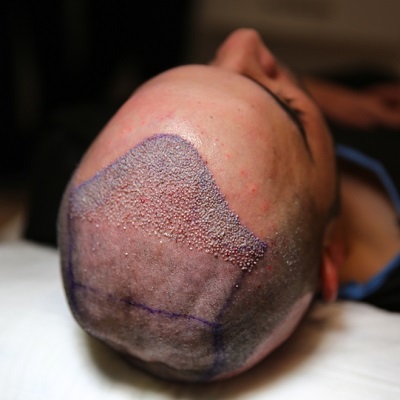Can FUT Hair Transplant Be Combined With Other Treatments?
Follicular Unit Transplantation (FUT) is a popular and effective method for restoring hair in individuals experiencing significant hair loss. However, many patients wonder if FUT can be combined with other treatments to enhance or complement the results. The answer is yes—FUT can be successfully combined with several other hair loss treatments to improve both the density and health of your hair. Below, we’ll explore some of the most common treatments that can be paired with FUT for optimal outcomes.
1. FUE (Follicular Unit Extraction):
Combining FUT with Follicular Unit Extraction (FUE) is one way to maximize the number of grafts transplanted, especially for patients with extensive hair loss. While FUT involves harvesting a strip of scalp for graft extraction, FUE allows individual follicles to be taken directly from the donor area using a punch tool. After an initial FUT session, FUE can be used in subsequent sessions to further fill in areas of thinning or balding, achieving a more complete and natural look. This approach is known as a hybrid transplant, which offers the benefits of both techniques.
2. PRP Therapy (Platelet-Rich Plasma):
Platelet-Rich Plasma (PRP) therapy is one of the most commonly combined treatments with FUT. PRP involves drawing a small amount of the patient’s blood, processing it to concentrate the platelets, and then injecting the plasma into the scalp. Platelets contain growth factors that promote tissue repair and stimulate hair follicles, enhancing the healing process after FUT surgery. When combined with FUT, PRP can help:
- Accelerate post-operative healing.
- Reduce shock loss (temporary shedding of hair).
- Stimulate the growth of transplanted hair follicles.
- Improve hair density in the treated areas.
PRP therapy is often recommended both before and after FUT to create a supportive environment for healthy hair growth.
3. Medications (Finasteride and Minoxidil):
Many patients opt to combine FUT with hair loss medications such as Finasteride (Propecia) and Minoxidil (Rogaine). These medications help to slow down or stop further hair loss, particularly in untreated areas.
- Finasteride: This oral medication works by inhibiting the conversion of testosterone to dihydrotestosterone (DHT), a hormone responsible for hair loss. Taking Finasteride after a FUT transplant can prevent further thinning in areas that have not been transplanted.
- Minoxidil: Applied topically, Minoxidil helps stimulate hair follicles and prolong the growth phase of hair. Using it alongside FUT can encourage faster and thicker hair growth, both for transplanted and non-transplanted hair.
By combining FUT with these medications, patients can maintain their existing hair and enhance the overall results of their hair restoration journey.
4. Low-Level Laser Therapy (LLLT):
Low-Level Laser Therapy (LLLT) is a non-invasive treatment that uses low-intensity lasers to stimulate hair follicles, promote blood circulation, and encourage hair growth. LLLT can be used before and after a FUT transplant to boost the overall effectiveness of the procedure. When combined with FUT, LLLT can:
- Help reduce inflammation after surgery.
- Speed up the healing process.
- Promote stronger and thicker hair growth.
Many patients find that LLLT enhances the results of FUT by improving the quality and texture of both transplanted and native hair.
5. Scalp Micropigmentation (SMP):
Scalp Micropigmentation (SMP) is a cosmetic procedure that involves tattooing tiny dots on the scalp to create the illusion of hair density. While SMP does not stimulate hair growth, it can be a powerful complementary treatment for those who wish to add more visual fullness to their hair after a FUT transplant.
Patients who combine SMP with FUT can achieve the appearance of denser hair, particularly in areas where hair is still thin or sparse even after transplantation. SMP can also help camouflage any scars from the FUT procedure.
6. Hair Care and Nutritional Support:
Following a FUT procedure, using high-quality hair care products and maintaining a healthy diet rich in vitamins and minerals can also play a role in improving the results. Biotin, zinc, and omega-3 fatty acids, for example, are known to support healthy hair growth. Some clinics offer specific nutritional supplements designed to promote optimal hair health, which can be used in combination with FUT to further enhance the quality of hair growth.
Conclusion:
Yes, FUT can be combined with a variety of other treatments to optimize results and improve hair density. Whether it’s pairing FUT with FUE for a hybrid transplant, using PRP therapy to promote healing and growth, or incorporating medications like Finasteride and Minoxidil to preserve existing hair, these complementary treatments can help patients achieve their desired outcome. Low-Level Laser Therapy and Scalp Micropigmentation are also effective ways to enhance the appearance of hair after a FUT transplant.
For more information vist Enfield royal clinic.

